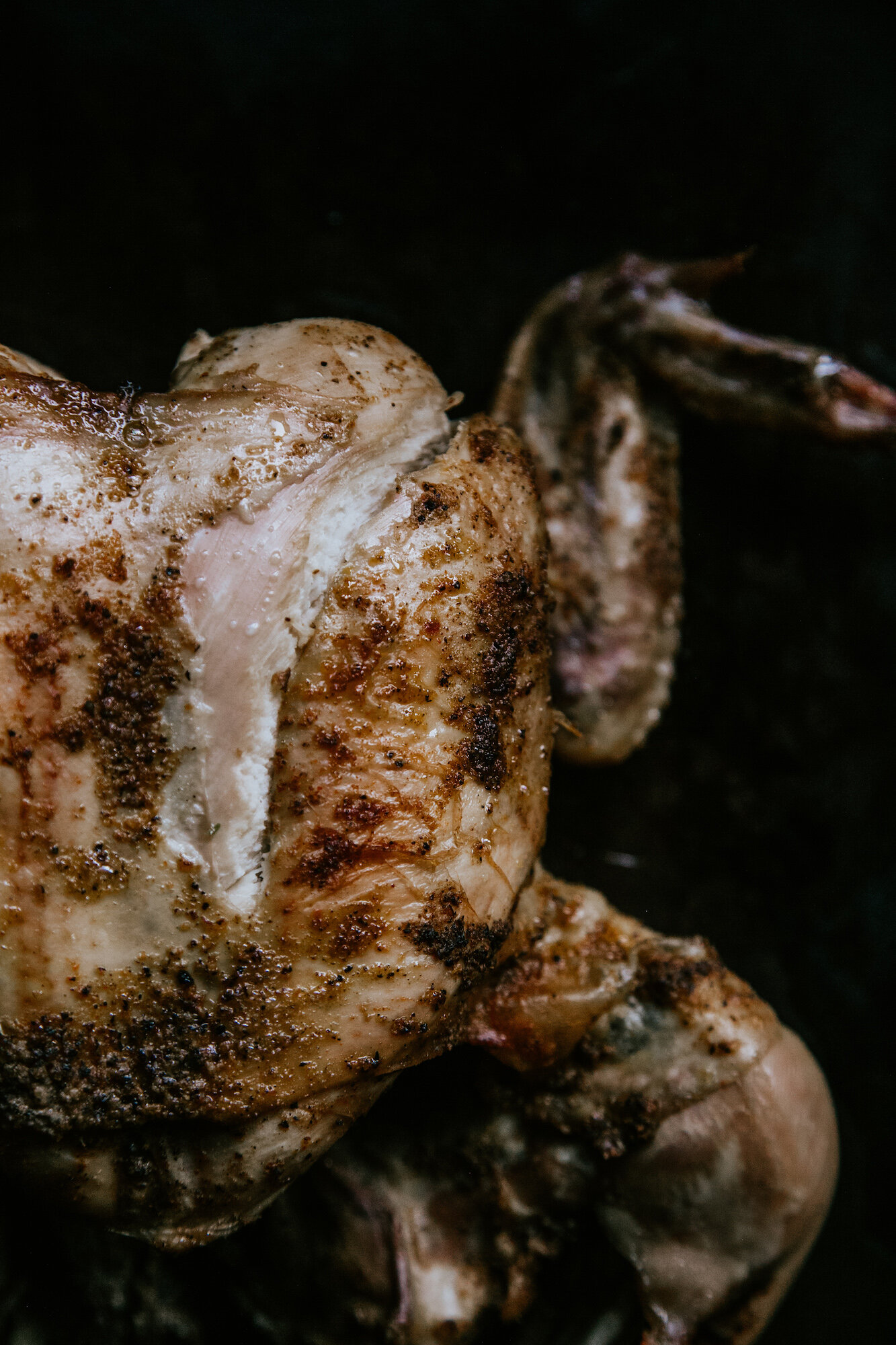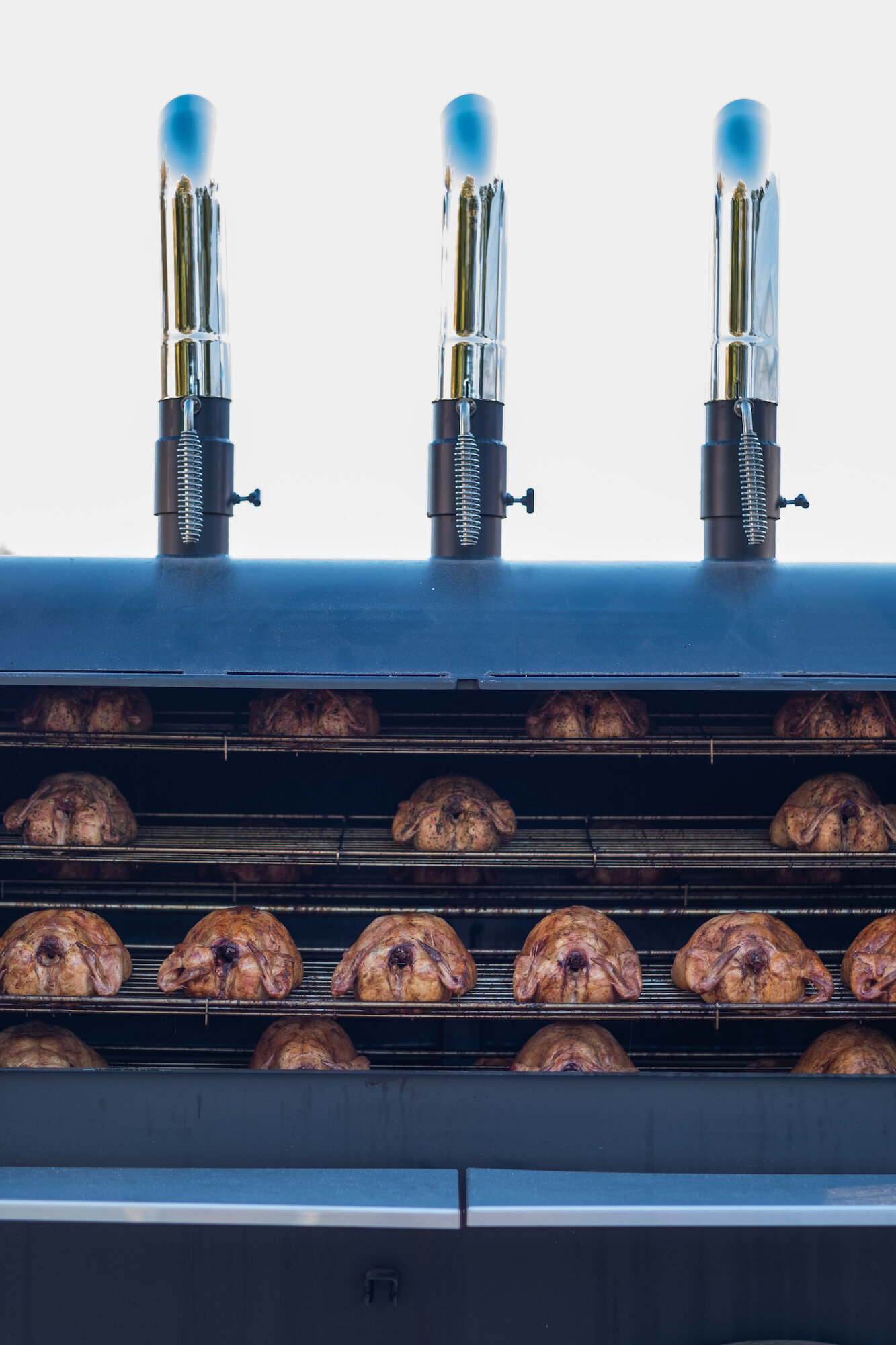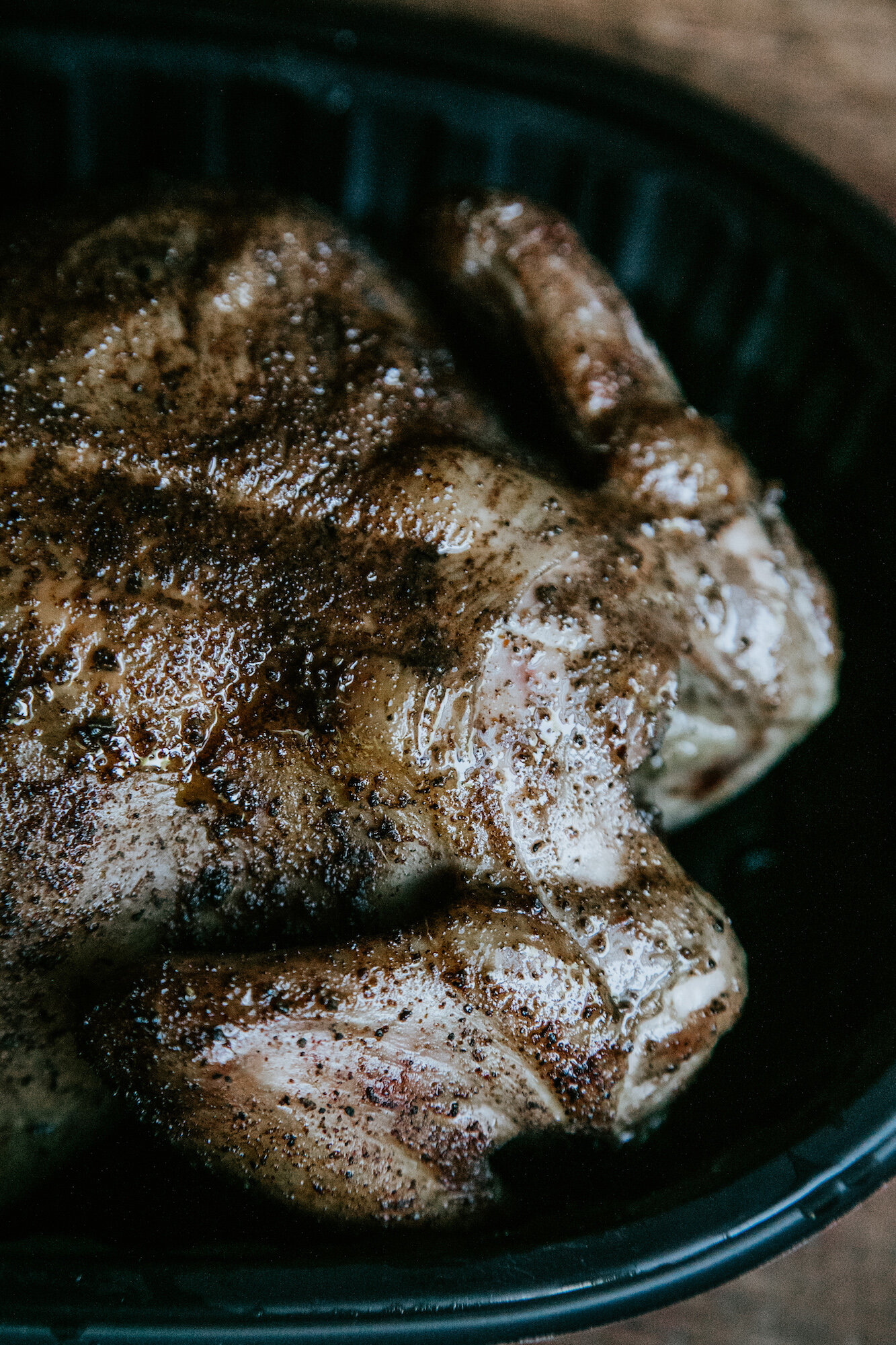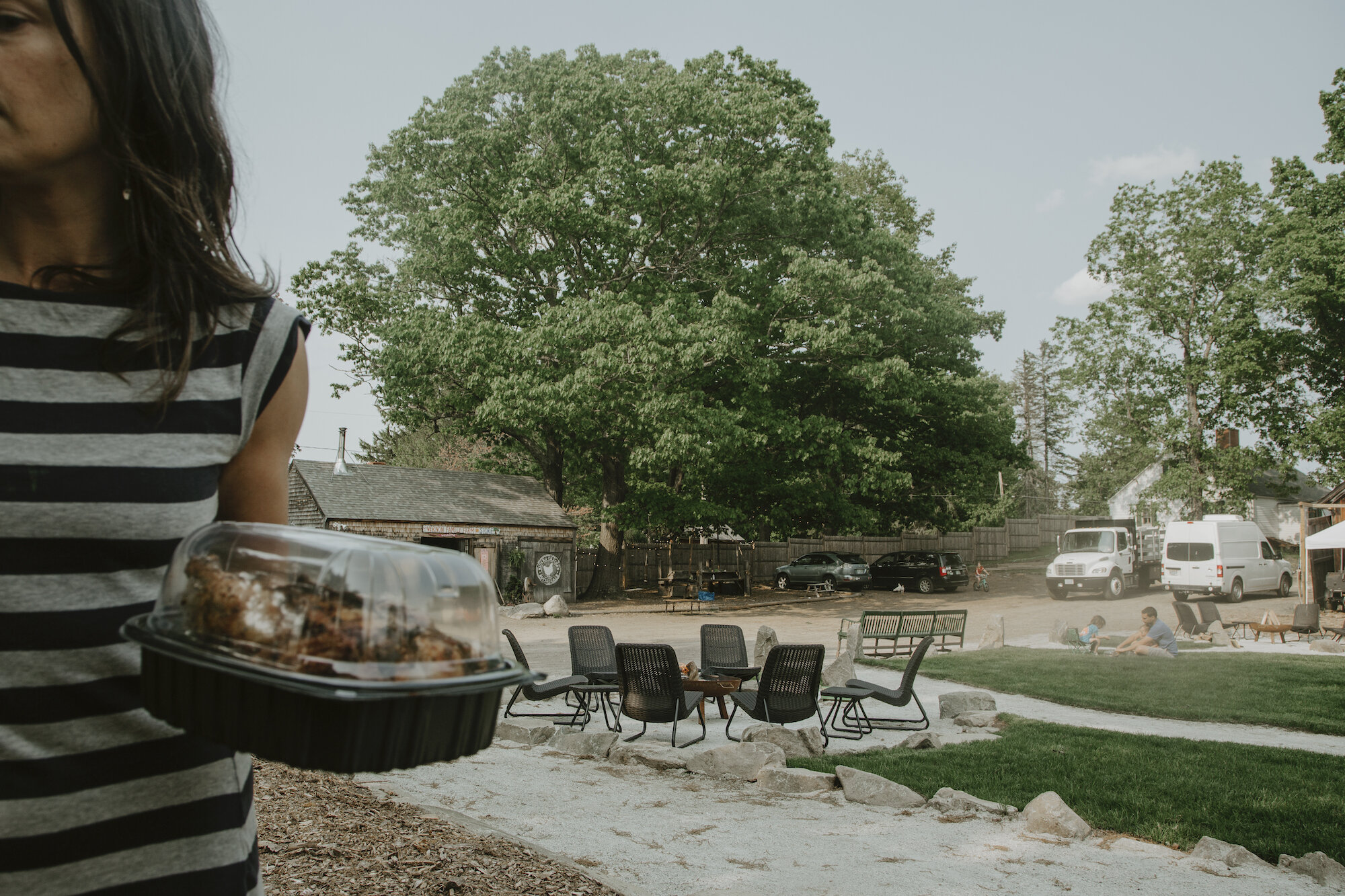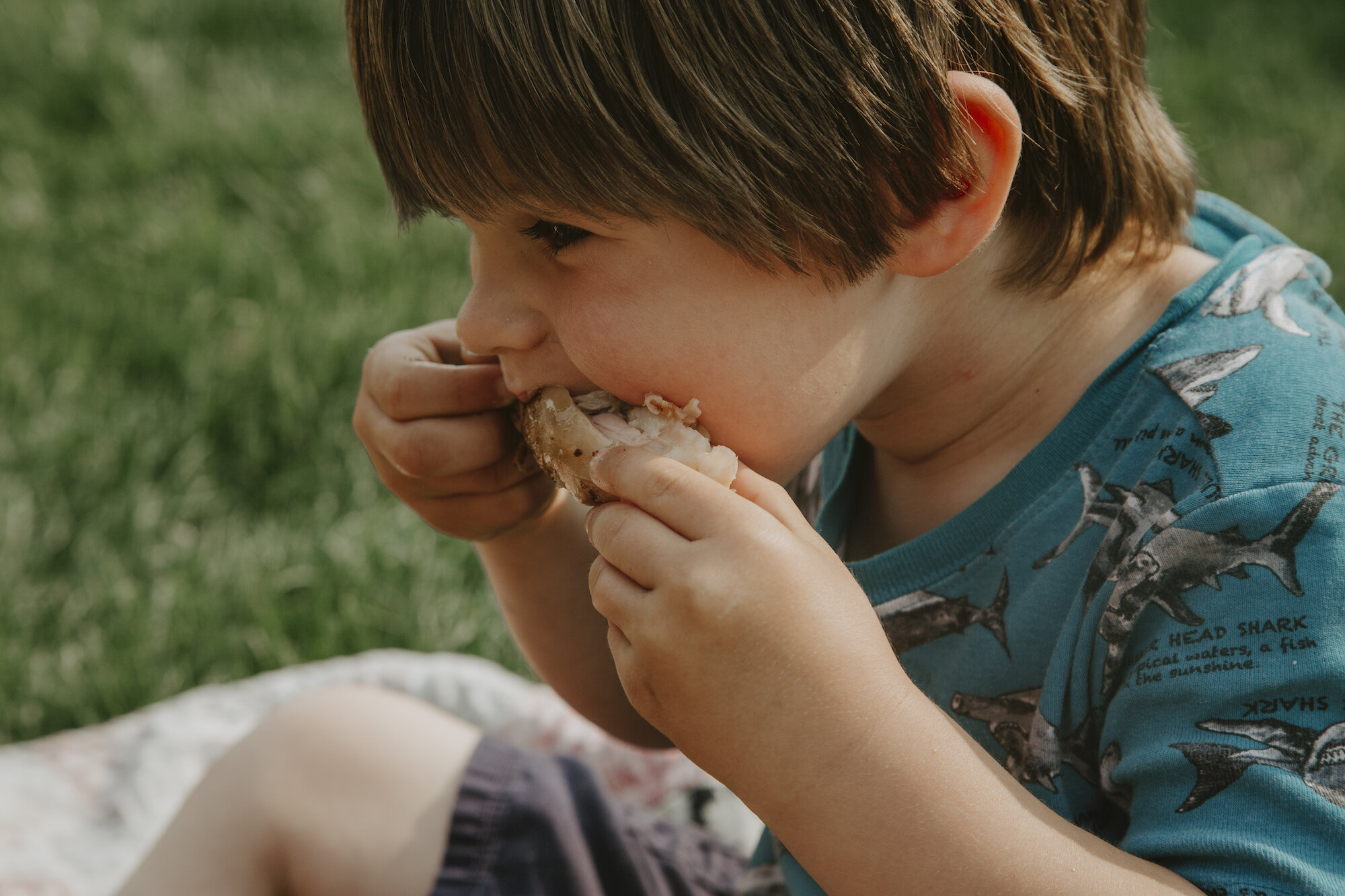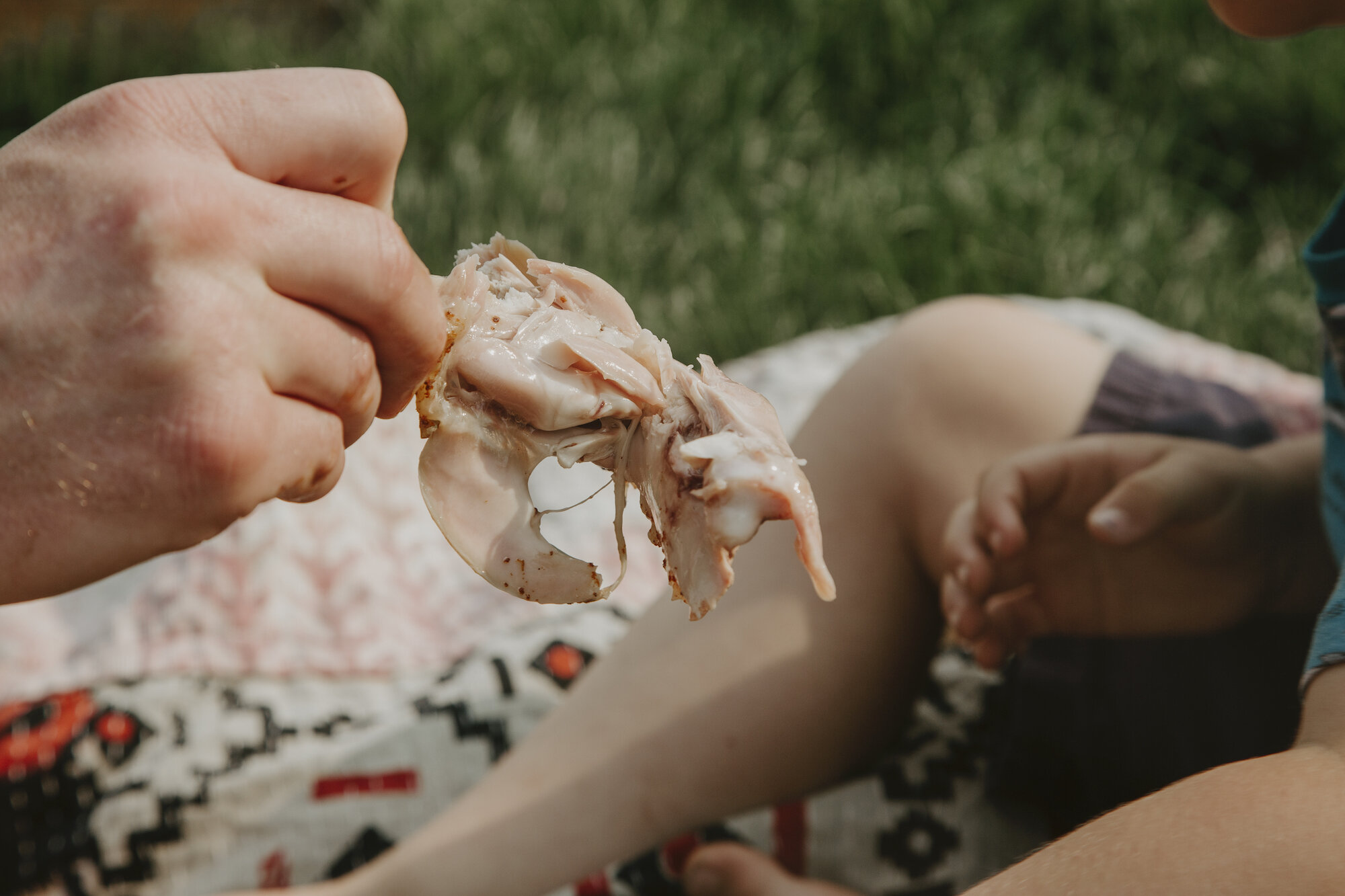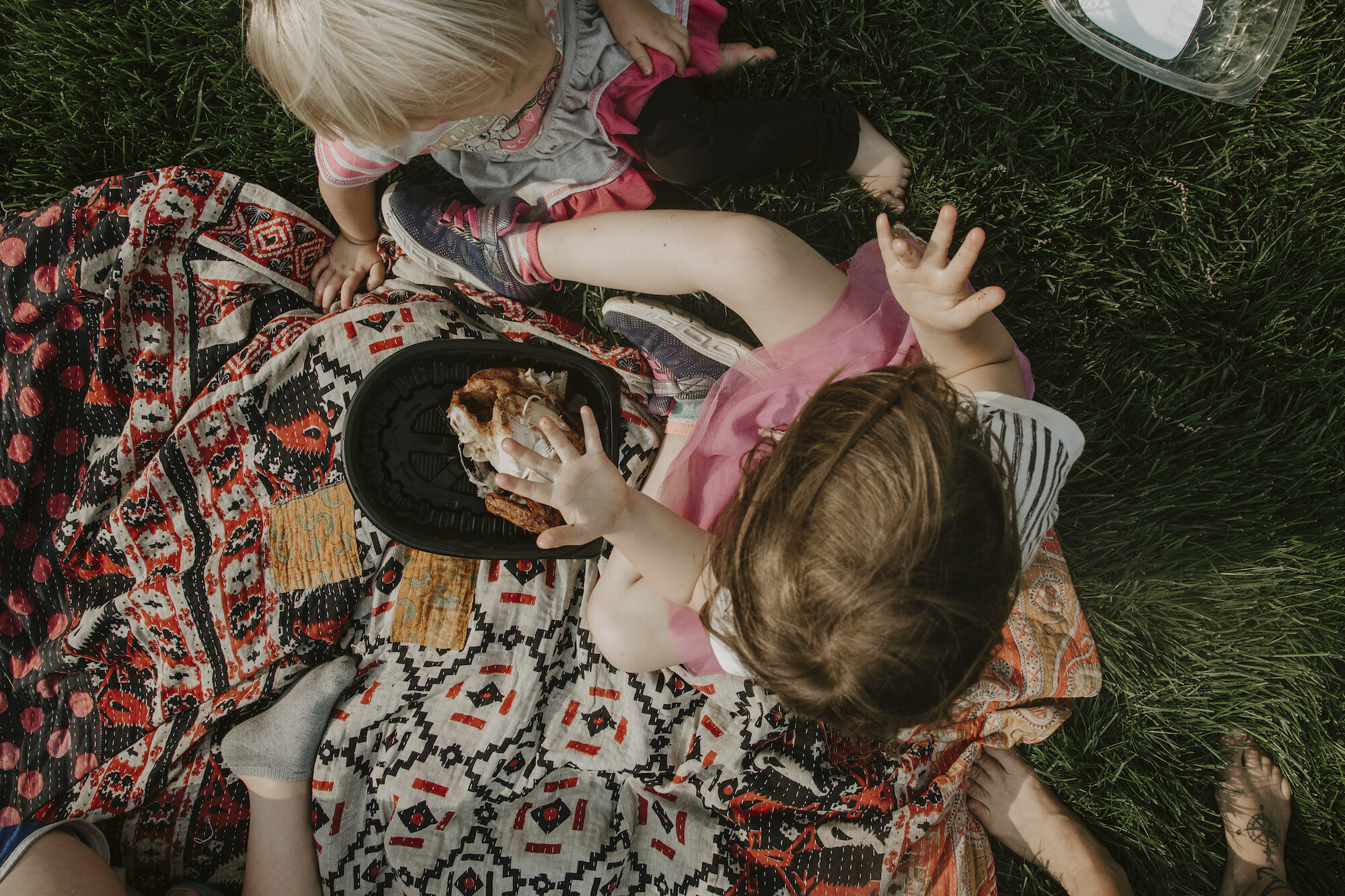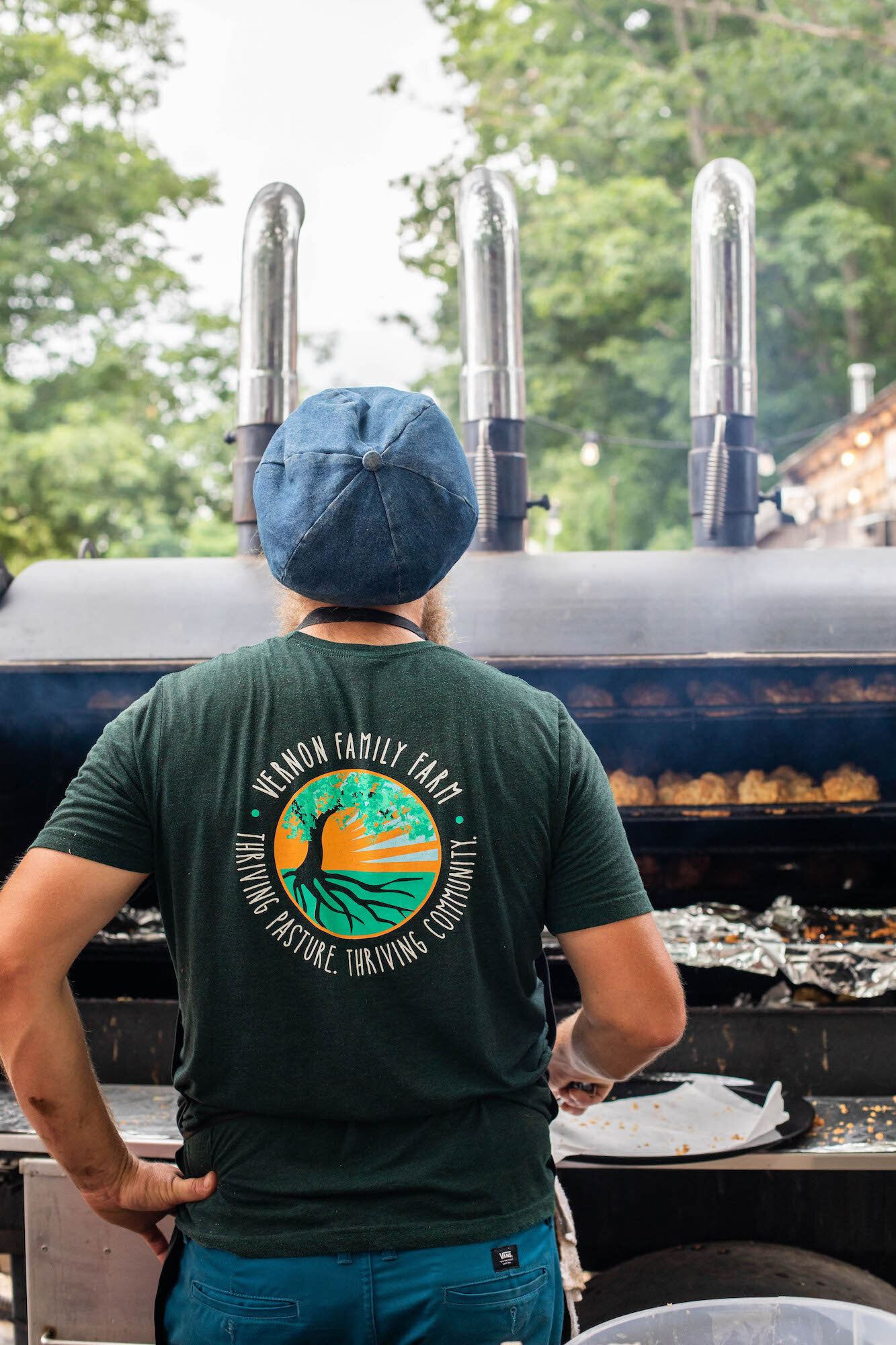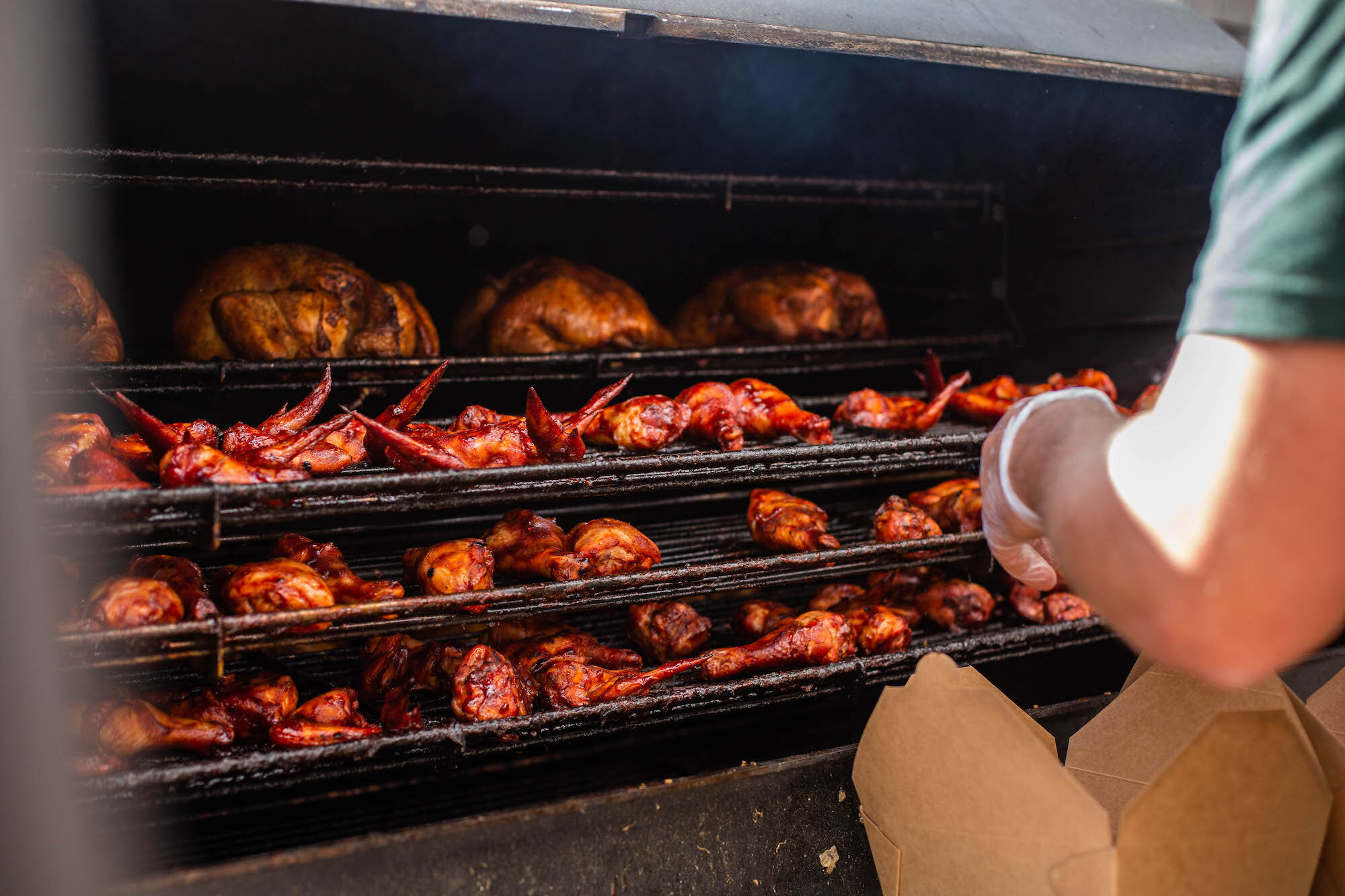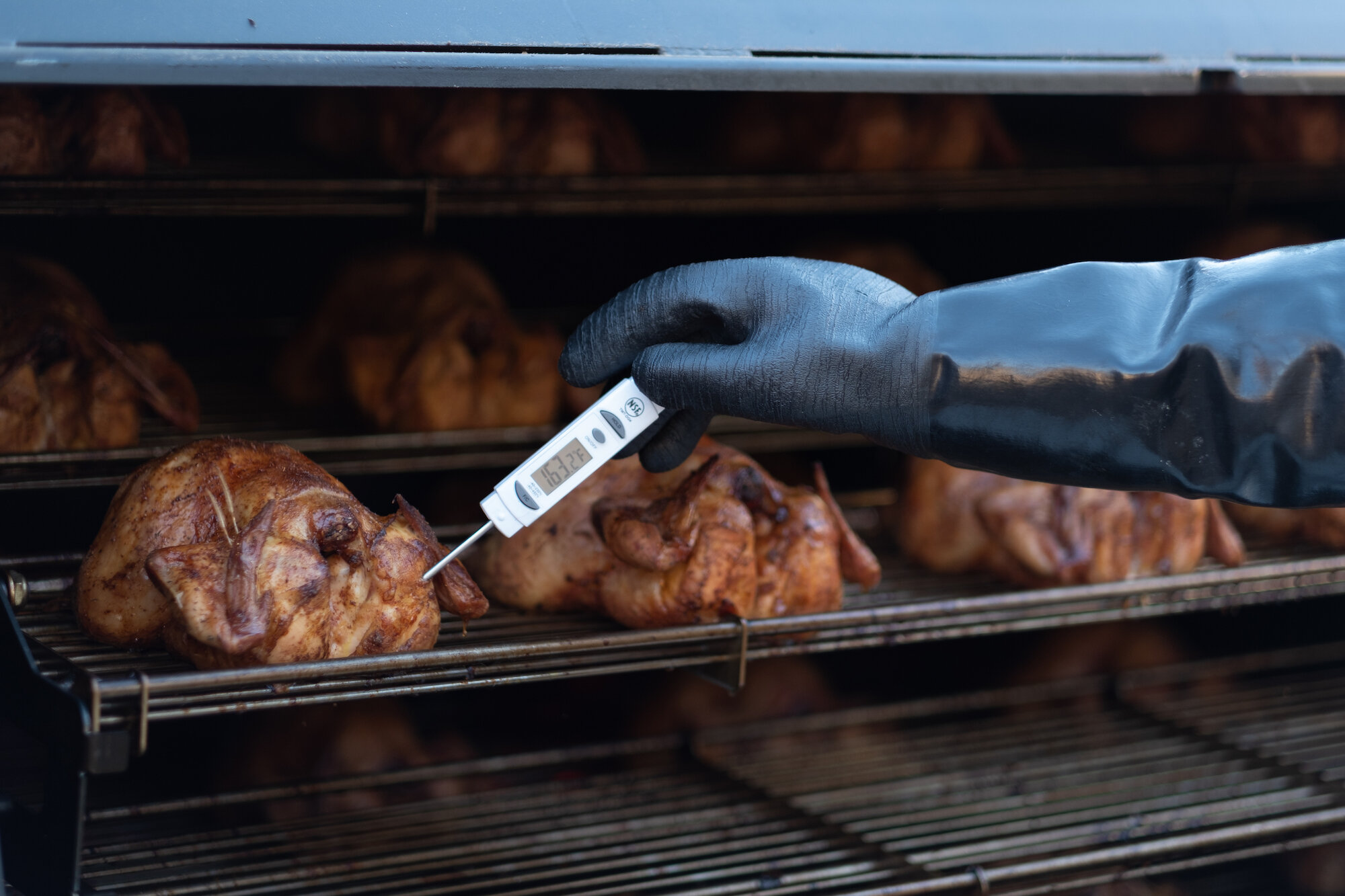A FARMER'S STORY OF ROTISSERIE CHICKEN
What started as a smoky brainstorming session 6 years ago, considering how people eat chicken and what we could do to get them to eat more chicken, turned into rotisserie chicken night.
On our first ever rotisserie chicken night at the farm, we borrowed a smoker from Darren Davis at Littlebrook Farm, which held just fifteen broilers at most. For those of you whose life is not completely consumed by the existence of a bird, a broiler is a whole, cleaned, ready to be cooked chicken. Our soft opening pretty much went as expected—starting two hours late and short a rotisserie chicken.
SMOKING ROTISSERIE CHICKEN
After borrowing the smoker from Littlebrook Farm, we commissioned the Seacoast School of Technology’s welding fabrication class to make us a smoker. While beautiful, it lacked some of the necessary controls needed to bring quality rotisserie chicken to the table on the regular.
Eventually, with additional support from neighbors and the community, we purchased our current smoker from American Barbeque Systems. We are now spoiled. It is a behemoth. An amazing example of welding craftsmanship and capable of smoking 50 broilers or 600 pieces of bbq to perfection. Any rare failings are user error and a consequence of the situation.
When you smoke a chicken, the goal is to balance flavor and moisture with a crispy skin. This is especially hard with chickens raised on pasture where the weight of each bird is by nature inconsistent. A 5lb bird smokes very differently from a 3lb bird. It’s easy to get it wrong when the broiler size alone is not the only variable. The weather also has a great impact on cook times. On low pressure days, the reduced draft can stifle your smoke and make it very hard to get up to temperature. Rain on the smoker will cool it down. Wind will make it take longer to get to temperature and harder to hold temperature.
And the weight of a chicken is more complicated than you might think. A chicken that has a live weight of 7lbs will have a hanging weight of 5lbs and a ready to eat rotisserie chicken weight of 3.5lbs. That is a 50% weight loss from live weight to finish weight. We sell our chicken by the pound and losing 50% of the poundage while adding cooking costs is an expensive process.
FROM CHICK TO YOUR PLATE
We grow cornish cross chicks from Moyer's Hatchery, in batches of 3200 at a time.
3200 chicks arrive and are placed into the brooder for four weeks. Brooders are climate controlled environments, created to maximize bird health and growth while limiting stressors. Ours also requires daily chores, such as feeding and bedding.
The chickens are moved to pasture for four weeks. We always move the chickens after the sun goes down aka night farming. After the sun goes down, the chickens bed down for the night and are calm and easy to work with minimal stress.
Then they are loaded for processing and trucked to the slaughterhouse, which is also always done at night.
The cut, packaged and labeled chicken is then trucked back to the farm.
Then we deliver some to Vernon Kitchen, our commercial kitchen and prepared food business for seasoning.
Then we truck it back to the farm for smoking and selling.
Then, it goes in your mouth and you are happy.
WHAT DOES A PERFECT ROTISSERIE CHICKEN LOOK LIKE?
CRISPY SEASONED SKIN: Crispy skin is hard to maintain in a package but something really special about VFF rotisserie chicken is that we use tasty local Stock + Spice seasonings to flavor your favorite Friday night protein.
SMOKE RING: Many customers have called with concern thinking that they have an undercooked bird when, in reality, they had well-smoked rotisserie chicken, ripe for the eating. A smoke ring is a pink layer of meat that forms within a centimeter of the surface of the chicken. The larger the smoke ring, the more significant the smoke flavor and impact the smoke has on the meat. Smoke ring = good.
MOIST MEAT: Contrary to common belief, smoked meats should not be dry. Dry meat means the bird is overcooked. There should be clear, flavorful, great for dipping drippings or liquid that comes out of the meat when you cut it.
Vernon Kitchen’s rotisserie chicken was just the beginning. From this smoky nugget of an idea has arisen a complete product line of our prepared chicken offerings including all the goodness of rotisserie chicken—freshly smoked whole birds, pot pies, soup, 14+ hour simmered chicken bone broth, BBQ plates, and more. It has spawned a pastured chicken-focused event series, with live music on select nights. And have you tried our fried chicken—which we host 2/per month May-October? Don’t miss it!
And our original offering, rotisserie chicken, is available fresh and hot, every single Friday—all year round. Maybe, in a rapidly changing world, rotisserie chicken cravings are the constant? We hope to see you on a Friday at the farm.


